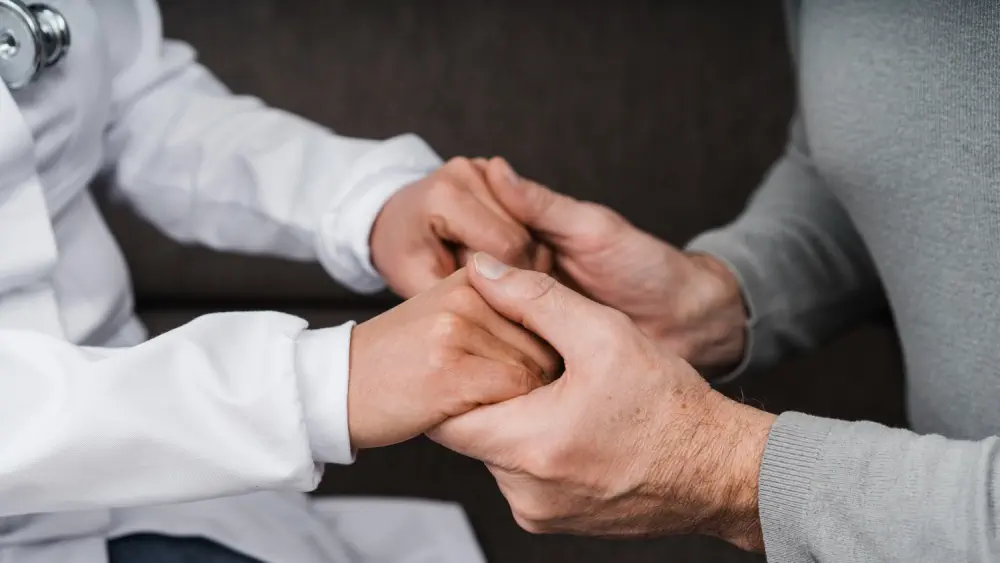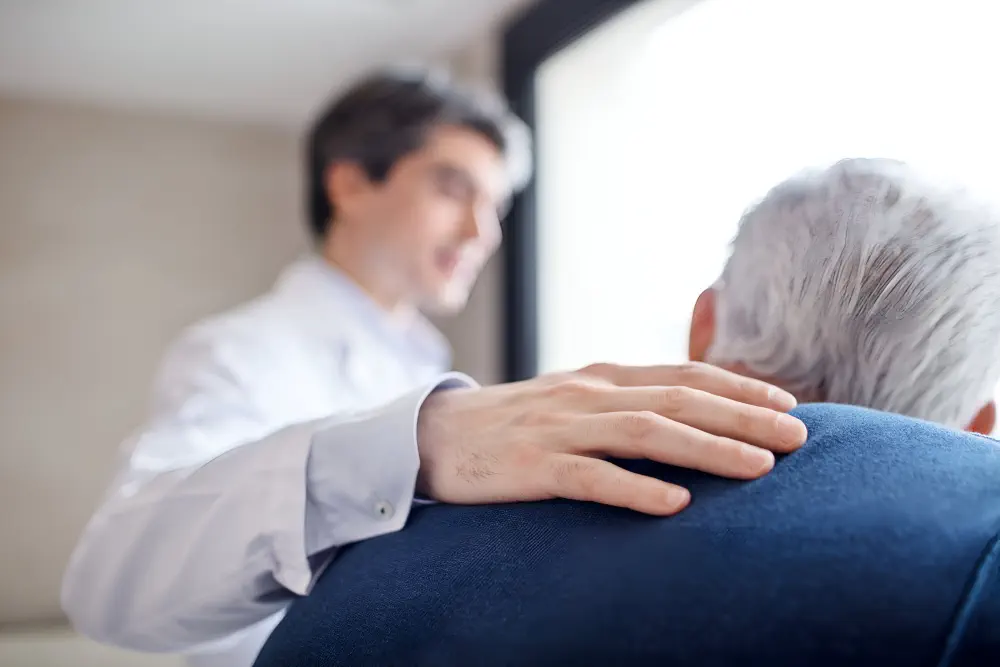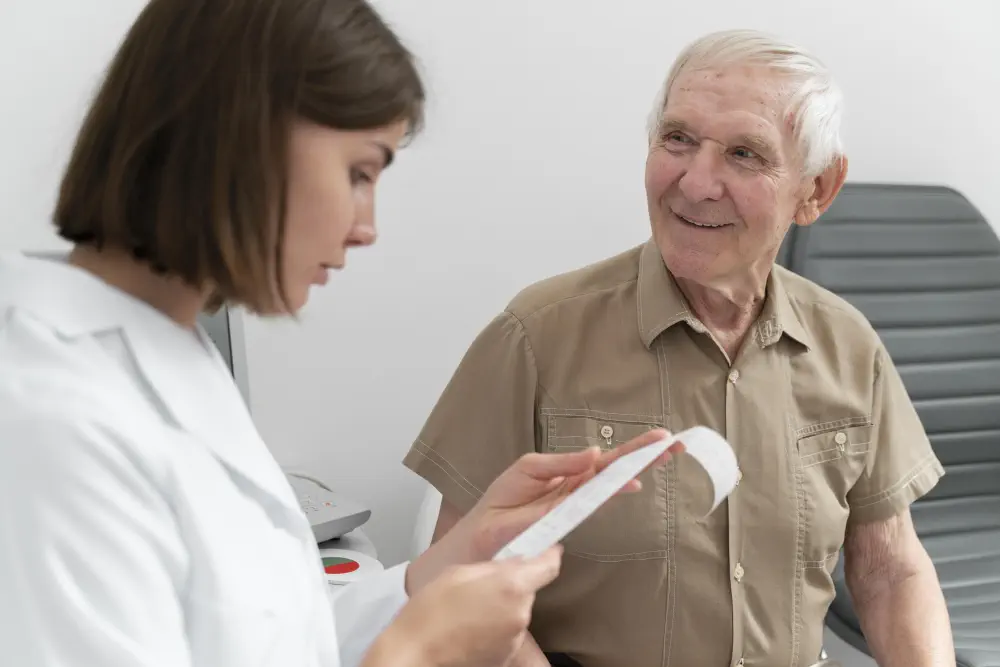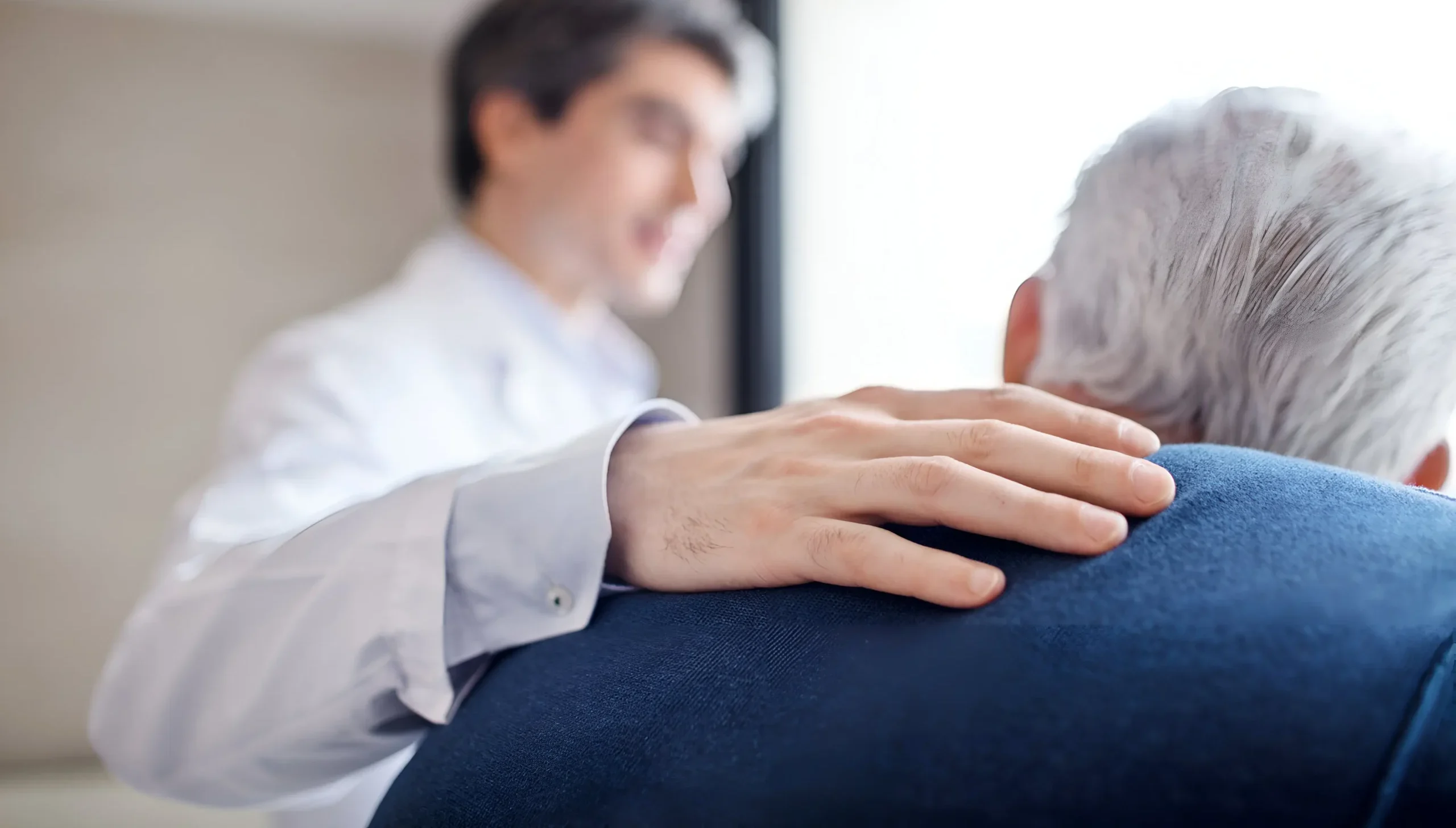We offer medical detox and multiple addiction treatment options in our
luxury treatment centres in Port Hope, Cobourg, and Ottawa.
What Is Alcoholic Nose?
Have you ever seen someone with a red, bulbous nose and have automatically assumed they had a drinking problem? You're not alone. This assumption runs so deep in our culture that it's shaped how we view an entire medical condition. But what if everything you thought you knew about "alcoholic nose" was wrong? The time has come to separate medical facts from cultural myths and understand what's really happening when someone develops this misunderstood condition.
Key Takeaways
- What is rhinophyma actually? – A skin disorder from untreated rosacea that has zero connection to alcohol, yet people still wrongly link red noses with heavy drinking habits.
- How widespread is this problem? – More Canadians deal with this than you'd think, but most hide it instead of getting help because they're embarrassed about what others might assume.
- When should you act on symptoms? – Catching redness and sensitivity early means simple creams and pills can stop progression, but waiting often leads to needing reconstructive surgery.
- Why do people suffer in silence? – Fear of being labelled an alcoholic keeps many from doctors' offices, destroying careers and relationships while their condition gets worse.
- Can severe cases be reversed? – Even dramatically disfigured noses can be restored to normal appearance through modern surgery, and counselling helps rebuild confidence.
- How do you stop it before it starts? – Managing underlying rosacea with sunscreen, gentle skincare, and avoiding personal triggers prevents the tissue overgrowth from ever happening.

What Is Alcoholic Nose and What Actually Causes It?
Alcoholic nose, medically called rhinophyma, is a progressive skin disorder that makes the nose develop a red, swollen, and bumpy appearance. The condition comes from severe, untreated rosacea, not from drinking alcohol. Rhinophyma comes from Greek words meaning "nose growth," which accurately describes how excess tissue gradually builds up over many years.
The condition develops when oil glands beneath your skin go haywire. These sebaceous glands usually help maintain your skin from drying out. But with rhinophyma, they get way too big and make too much oil. The tissue around it also gets much thicker, which is what people think of when they think of heavy drinking.
What causes an alcoholic nose? It has several factors:
- Genetic predisposition – Fair-skinned people of Northern European ancestry face higher risks
- Severe rosacea – Untreated papulopustular rosacea serves as the underlying condition
- Environmental triggers – Sun exposure, temperature extremes, and certain foods can speed up development
- Hormonal factors – Men develop the condition four times more often than women
- Age-related changes – Most cases occur between the ages of 50 and 70
The whole process happens slowly. It takes decades to reach severe stages. Blood vessels gradually dilate, skin texture changes from smooth to bumpy, and tissue overgrowth creates deep grooves and weird nodular formations.
Why Do We Call It "Alcoholic Nose" Anyway?
The association between rhinophyma and drinking goes back centuries. Medieval writers loved depicting tavern patrons with red, bulbous noses. Charles Dickens reinforced these images through characters with pronounced nasal deformities linked to excessive drinking. Popular culture kept the myth alive. Cartoons, movies, TV shows – the stereotypical "drunk" character always had a large, red nose. This became visual shorthand for alcohol abuse, despite medical evidence proving otherwise.
A study from the University of Strasbourg published in the Journal of the American Academy of Dermatology found that drinkers and non-drinkers were equally likely to develop rhinophyma in the first place. However, there was a correlation between alcohol intake and the severity of rhinophyma among those who already had it. The condition affects religious leaders, health professionals, and others who rarely or never drink alcohol, definitively proving that alcohol doesn't cause the initial development of rhinophyma.
What Does "Alcoholic Nose" Look Like and How Does It Progress?
Alcoholic nose symptoms can sneak up on you. As we discussed earlier, they develop gradually over months or years, moving through distinct stages. This helps doctors figure out how serious things have gotten.
Early Warning Signs
Watch for these first signs:
- Persistent redness across your nose and central face
- Burning or stinging feelings, especially after sun exposure
- Your nose becoming sensitive to temperature changes
- Skin that feels warm when you touch it
- Blood vessels showing up beneath the skin surface
How It Progresses
| Stage | What You'll See | How Long Does It Take | Treatment Success |
| Early | Persistent redness, mild sensitivity | Months to years | Excellent with creams |
| Moderate | Skin thickening, bigger pores, visible vessels | 1-3 years | Good with oral meds |
| Advanced | Major enlargement, deep grooves, bumps | 3+ years | Needs surgery |
| Severe | Extreme changes, breathing problems | 5+ years | Complex reconstruction |
When Things Get Serious
Severe cases create dramatic changes that mess with daily life:
- Your nose can double in size
- Deep grooves and cracks form between overgrown tissue
- Skin turns purple or deep red
- Breathing becomes difficult because the nasal passages narrow
- Enlarged tissues can block your peripheral vision
How Alcohol Can Make Existing Symptoms Worse

Let's clear this up: understanding alcohol's role in “alcoholic nose” means knowing the difference between causing something and making it worse. Alcohol doesn't create rhinophyma. But it can definitely worsen existing rosacea through biological changes affecting facial blood flow.
What Happens When You Drink
When you consume alcohol, it triggers vasodilation – your blood vessels widen throughout your body. For people with rosacea, this intensifies existing facial redness and can trigger inflammatory flare-ups. The alcohol flush response hits some people harder due to genetic differences in how they process alcohol.
This vasodilation kicks in within minutes of drinking as alcohol enters your bloodstream. Facial blood vessels, sitting close to your skin surface, become more visible and allow increased blood flow to the area. This creates that characteristic flushing that can stick around for several hours, depending on how much you drank and how fast your body processes it.
People with aldehyde dehydrogenase deficiency – particularly common in people of Asian descent – experience much more severe alcohol flush reactions. This genetic variation can show up in any population and significantly amplify the redness and inflammation that comes with alcohol consumption.
Timing Matters
When you drink alcohol while dealing with other triggers, the effects can pile up. Drinking while getting sun exposure, eating spicy foods, or during stressful periods produces more severe reactions than any single trigger alone. Hot alcoholic drinks like mulled wine or hot toddies combine multiple triggers at once.
Binge drinking patterns cause more severe flare-ups than moderate, steady consumption. Rapid spikes in blood alcohol create more dramatic vasodilation effects. Plus, the dehydration that follows can further irritate already sensitive facial skin.
How Alcohol Stacks Up Against Other Triggers
Alcohol plays a relatively small role compared to other rosacea triggers:
| Specific Triggers | Affected Patients | Notes |
| Sun exposure | 90% | Most common and powerful trigger |
| Temperature extremes | 80-85% | Both hot and cold weather |
| Emotional stress and anxiety | 75-80% | Can cause flare-ups lasting weeks |
| Spicy foods and hot drinks | 70-75% | Heat and spice compounds |
| Alcohol consumption | 30-40% | Varies by individual sensitivity |
| Certain medications | 25-30% | Blood pressure meds, topical steroids |
| Hard exercise | 20-25% | Increased blood flow and heat |
| Strong winds | 15-20% | Environmental irritation |
Alcohol-Specific Factors
- Red wine contains histamines and sulphites that can trigger additional inflammatory responses beyond the alcohol content
- Beer may cause reactions due to hops or histamines from fermentation
- Clear spirits often produce fewer reactions but can still trigger vasodilation
- Cocktails with mixers may contain additional triggers like citrus acids or artificial colours
Individual sensitivity significantly varies. Some patients find that even small amounts trigger symptoms. Others can drink moderate amounts without problems. Your genetics, how severe your underlying rosacea is, what medications you take, and your overall health all influence sensitivity.
For patients who choose to drink, keeping a symptom diary helps identify personal tolerance levels and which specific drinks cause problems. This lets you make informed decisions about consumption while managing the condition effectively.
Why Is It So Hard to Seek Help for Rhinophyma?

The misconception linking rhinophyma to alcohol addiction creates massive barriers that stop many people from getting necessary medical care. This stigma works on multiple levels, affecting how patients see themselves, how others see them, and how healthcare visits go.
Why People Avoid Getting Help
Many people with rhinophyma avoid social situations because they fear judgment. They worry others will assume they have drinking problems based solely on appearance. This social withdrawal leads to isolation, depression, and reduced quality of life that goes way beyond physical symptoms.
- What happens at work
The professional impact creates real career problems that go beyond personal discomfort. Job interviews become anxiety nightmares where appearance concerns overshadow qualifications. Customer-facing roles may become off-limits due to employer assumptions about professionalism. Networking gets avoided, limiting career advancement. Some people report being passed over for promotions or leadership positions where public representation matters.
- Healthcare provider problems
Unfortunately, some medical professionals accidentally reinforce stigma through assumptions or comments about lifestyle choices. Patients report getting unsolicited lectures about alcohol consumption during medical appointments, even when they barely drink. These experiences discourage follow-up care and sticking with treatment.
- Family drama
Well-meaning family members may add to the stigma through their own misconceptions. Comments like "maybe you should cut back on drinking" or questions about lifestyle choices damage relationships and reinforce shame. Kids may become embarrassed by a parent's appearance, affecting family dynamics.
People who really have problems with alcohol abuse have a hard time because of the stigma behind both addiction and medicine. Someone with both conditions may face double discrimination, making accessing both medical and addiction treatment feel impossible.
The Money Problem
Shame associated with rhinophyma often prevents early intervention when treatments work best and cost the least. Patients may delay seeking help for years, letting the condition progress to advanced stages requiring expensive surgical interventions rather than simple topical treatments.
Cost Breakdown:
- Early medical treatment costs hundreds versus thousands for surgery
- Lost work productivity from social withdrawal and missed opportunities
- Mental health treatment costs for depression and anxiety related to appearance concerns
- Extended recovery time and costs when treatment gets delayed
Mental Health Takes a Hit
The mental health impact extends beyond simple embarrassment. Research on rosacea patients published in Frontiers in Psychiatry found prevalence rates of 53.9% for anxiety and 58.1% for depression among those with the condition. Since rhinophyma represents the most severe, disfiguring form of rosacea, the psychological impact is likely even more pronounced. The constant worry about others' perceptions creates chronic stress that can worsen the underlying rosacea condition.
Specific Challenges:
- Social anxiety preventing routine activities like grocery shopping
- Depression from isolation and feeling rejected by others
- Body dysmorphic symptoms where patients become obsessed with their appearance
- Avoidant behaviours limiting life experiences and opportunities
Creating supportive environments requires comprehensive education campaigns that bust myths about the condition. Healthcare facilities can train staff to approach patients sensitively and avoid making assumptions about lifestyle factors.
How Do Doctors Treat Rhinophyma at Different Stages?

Alcoholic nose treatment approaches vary significantly based on how severe things have gotten. Early intervention with medical therapies often prevents progression to advanced stages requiring surgical correction.
Medical Treatment Options
Topical Medications:
- Metronidazole gel (applied twice daily)
- Azelaic acid cream for reducing inflammation
- Topical retinoids for normalizing how skin cells turn over
Oral Medications:
- Doxycycline (40-100mg daily) for anti-inflammatory effects
- Minocycline for severe inflammatory cases
- Oral isotretinoin for treatment-resistant cases
When Surgery Becomes Necessary
Advanced cases require surgical treatment to restore normal nasal appearance:
- Carbon dioxide laser surgery – Precise tissue removal with excellent control
- Electrosurgery – Uses controlled electrical energy to remove excess tissue
- Dermabrasion – Mechanical tissue removal for surface irregularities
- Surgical excision – Complete removal with skin grafting for severe cases
Recovery typically involves 1-2 weeks of initial healing for laser treatments, with final results visible after 2-3 months. Patients working with specialized teams, including dermatologists and plastic surgeons, get the best outcomes. For those with concurrent substance use concerns, individual counselling addresses psychological aspects of treatment.
What Are the Best Ways to Prevent Rhinophyma Progression?
Preventing rhinophyma development requires getting ahead of underlying rosacea before permanent tissue changes occur.
Essential Prevention Strategies
Sun Protection (This Is Critical):
- Daily broad-spectrum SPF 30+ sunscreen
- Wide-brimmed hats and UV-blocking sunglasses
- Seeking shade during peak UV hours (10 AM-4 PM)
- Physical sunscreens with zinc oxide or titanium dioxide
Smart Skincare:
- Gentle, fragrance-free cleansers
- Lukewarm water for washing
- Moisturizers with ceramides or niacinamide
- Avoiding alcohol-based products and strong fragrances
Lifestyle Changes:
- Identifying and avoiding personal dietary triggers
- Managing stress through exercise and relaxation techniques
- Temperature control to prevent hot/cold exposure
- Early medical intervention for persistent symptoms
For patients with concerns about alcohol consumption, building healthy coping mechanisms helps manage their condition without substances that might worsen symptoms.
How Can You Regain Confidence During Rhinophyma Treatment?

Building confidence during rhinophyma treatment requires addressing both physical symptoms and emotional impacts. Recovery goes beyond medical interventions to include psychological healing and getting back into social situations.
Support groups provide valuable connections with others who understand the unique challenges of living with visible facial conditions. Professional counselling addresses psychological impacts, while family education creates supportive home environments.
Recovery Strategies:
- Gradual social reintegration, starting with small gatherings
- Developing prepared responses for questions about appearance
- Focus on overall health and personal accomplishments
- Building new social connections through shared interests
The long-term outlook for rhinophyma patients has improved dramatically with modern treatment advances. Most patients who get appropriate treatment experience substantial improvement in both appearance and quality of life, with excellent outcomes when treatment starts early.
When to Seek Professional Help
Several warning signs indicate rhinophyma needs professional medical attention. Persistent facial redness that doesn't respond to basic care, progressive nose enlargement, or functional problems like breathing difficulties warrant immediate evaluation.
The Canadian Centre for Addictions recognizes that medical conditions like rhinophyma can create additional challenges for people in recovery. Our integrated approach addresses both medical and psychological aspects of care, ensuring comprehensive support during the healing journey.
FAQ
Is “alcoholic nose” always caused by drinking?
No, rhinophyma isn't caused by alcohol consumption – it's a severe form of rosacea affecting drinkers and non-drinkers equally.
Can rhinophyma be completely cured?
While not "cured," rhinophyma can be very effectively treated with medications and surgery, achieving excellent long-term results with proper management.
How long does treatment take?
Medical treatments require 3-6 months to show improvement, while surgical treatments provide immediate changes with complete healing in 6-12 weeks.
Will my insurance cover treatment?
Most Canadian provincial health plans cover evaluation and medical treatments, with surgical coverage more likely when functional problems exist.
Can the condition return after surgery?
Recurrence is possible but uncommon when patients maintain proper post-surgical care and ongoing rosacea management with sun protection and trigger avoidance.






